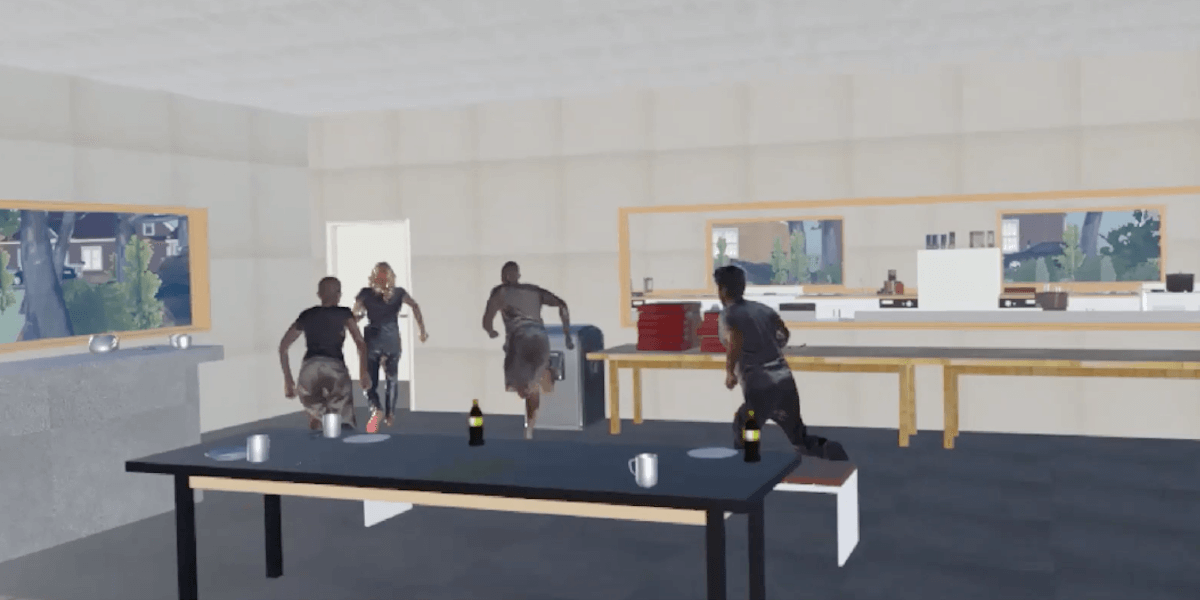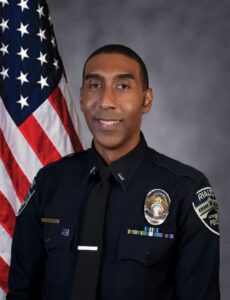By Avni Shah
Last summer, Burçin Becerik-Gerber, professor in civil and environmental engineering at the Sonny Astani Department of Civil and Environmental Engineering, Stephen Schrank Early Career Chair in Civil and Environmental Engineering and co-director of the Center for Intelligent Environments (CENTIENTS) at the USC Viterbi School of Engineering, was in London as part of her Rutherford Fellowship at the Alan Turing Institute. When she returned to her hotel room, she had several voicemails from her sons’ elementary school back in Los Angeles. The first message announced an emergency lockdown. There was a threat in the school. As she listened to the series of voicemails, she felt like hours had passed. The last message shared that the incident was resolved, and parents could pick up their children, but Becerik-Gerber struggled to feel relief.
So far away from her sons, she felt helpless.
When Becerik-Gerber returned, she wondered what she could do to change things. How could she use her expertise — in intelligent buildings responsive to human beings — to help make students like her sons safer in the space they occupy daily?
“Just because you cannot do everything,” she said, “Doesn’t mean you should do nothing.”
In an effort to help mitigate the growing epidemic of mass shootings, she began thinking not from the perspective of guns, but from the perspective of buildings. “I know buildings very well and how they are designed and operated. From what I know, how can I help?” she asked herself.
Becerik-Gerber partnered with Gale Lucas, who co-founded CENTIENTS with Becerik-Gerber, and Erroll Southers, who is a professor of practice in national and homeland security at the USC Sol Price School of Public Policy. Together, they answered several questions, including the main one: If building security mostly focuses on keeping bad actors out, what do you do if a bad actor gets in?
Said Southers, who is also the director of the Safe Communities Institute and former deputy director in the California Office of Homeland Security and FBI special agent: “School shooters, in my opinion, are not opportunists. They don’t walk down the street and say, yeah, I think I’ll hit this location.”
According to Southers, it is often someone who knows how to access the building in question who comes in to do harm. Thus, the team of researchers decided that it was important to look at how building occupants could be safer inside the spaces they most often occupy. “When I came to the project it was with the question: Can we design a space that inherently makes a person safer, with almost no training at all? In other words, intuitive.”
Lucas, who is a research assistant professor in the USC Viterbi Department of Computer Science and at the USC Institute for Creative Technologies, came to the project not just with the hope of working towards safer buildings and communities, but also because of the opportunity to understand how virtual reality could be used as a tool to complete research that would otherwise be costly, complicated and emotionally distressing.
“In social science research, we have to be careful to study things that are important to understand in the world, but do so in a way that we’re taking the best care of our participants. I think this project is a great case study for how virtual reality can enable researchers to study things in an ethical way that we wouldn’t be able to explore or simulate otherwise.”
The team of researchers put together a proposal, which was funded by the National Science Foundation in August 2018, to design a virtual environment that they could use to study the influence of building design and operations on occupant behavior and safety by modeling different design options and simulating active shooter incidents.
The Virtual Environment
One of the biggest challenges for this project was determining which types of buildings to use. An FBI study examining active shooter incidents between 2000 and 2013 found that 70% of these events occurred in schools or businesses. Beginning with these two locations, the team grappled with questions of design. Feature by feature, they focused the preliminary designs on creating a school and an office that was representative of an average school or office in America.
The team is working with USC Viterbi Runhe Zhu, a Ph.D. student, supervised by Becerik-Gerber, who is double majoring in civil engineering and computer science, to design four virtual environments: two “regular” layouts and two “enhanced” versions to test security recommendations by federal agencies and that were validated by focus groups including security designers/building engineers, law enforcement and security personnel. These recommendations included different levels of access, frosted glass, different levels of line of sight, inclusion/elimination of hiding spaces, different numbers and locations of exits and staggered doorways, to name a few.
The office and school designs were modeled to be the same in terms of shape and general layout, with key differences resulting from the purpose of the spaces. The office building thus had cubicles and open areas, while the student spaces had more classrooms, for example. Keeping the building layout, the same was important, said Becerik-Gerber, in ensuring that the responses of study participants could be correlated to differences in the social contexts of the building and not differences in their layouts.
Becerik-Gerber sees this model working for other emergency scenarios, as well, for example fires. “This is where dynamism will come into play. How can a building adapt itself into these events? Can the building lock up the shooter in a portion of the building or eliminate airflow to a section of the space in the case of a chemical or biological attack?”
At the same time, the researchers hope to study how familiarity with a building can change how individuals respond in an active shooter situation. To this end, participants will be put through both environments in random order. “The main recommendation is hide, run, fight. How much do these decisions change through the design of the building and how does familiarity with the building design influence individual decision-making?” Becerik-Gerber said.
Southers suggests that this familiarity will likely increase an individual’s ability to respond to active shooter incidents—and other emergency situations like earthquakes and fires. “Whatever you have practiced or run through in your head is what you will default to in the event of an emergency,” he said. At the same time, he hopes that the virtual environment will also help identify designs that are so intuitive, even individuals new to the space can take advantage of them to keep them safe.
In the coming months, the researchers will bring in over 200 real world teachers and office workers to go through the virtual reality environment. Using treadmills, these individuals will move through the school and office spaces with the goal of getting away from the active shooter. The team aims to have a preliminary set of data and analysis to share in the spring of 2020.
Virtual reality environments are currently being used by law enforcement and security officials for training purposes. There were 317 mass shootings recorded in 2018 in the U.S., according to the Gun Violence Archive. In 2019, over 330 have already been reported, meaning there have been more shootings than days in the year. Environments such as those created by Becerik-Gerber, Lucas and Southers could be important in combating deaths resulting from such violence, as well as potentially preventing incidents in the first place.
Southers hopes that this type of research can pave the way for new standards on buildings. “In a perfect world, we could create and certify safety standards based on data collected from these types of modules. Using VR to test design features before implementing them is more effective in terms of cost and protection.”
This project is funded by the National Science Foundation Award # 1826443: Impact of Building Design Attributes on Occupant Behavior in Response to Active Shooter Incidents in Offices and Schools. The proposal was submitted by Burçin Becerik-Gerber, David Pynadath, Erroll Southers and Gale Lucas.
This article was originally published by the USC Viterbi School of Engineering.




